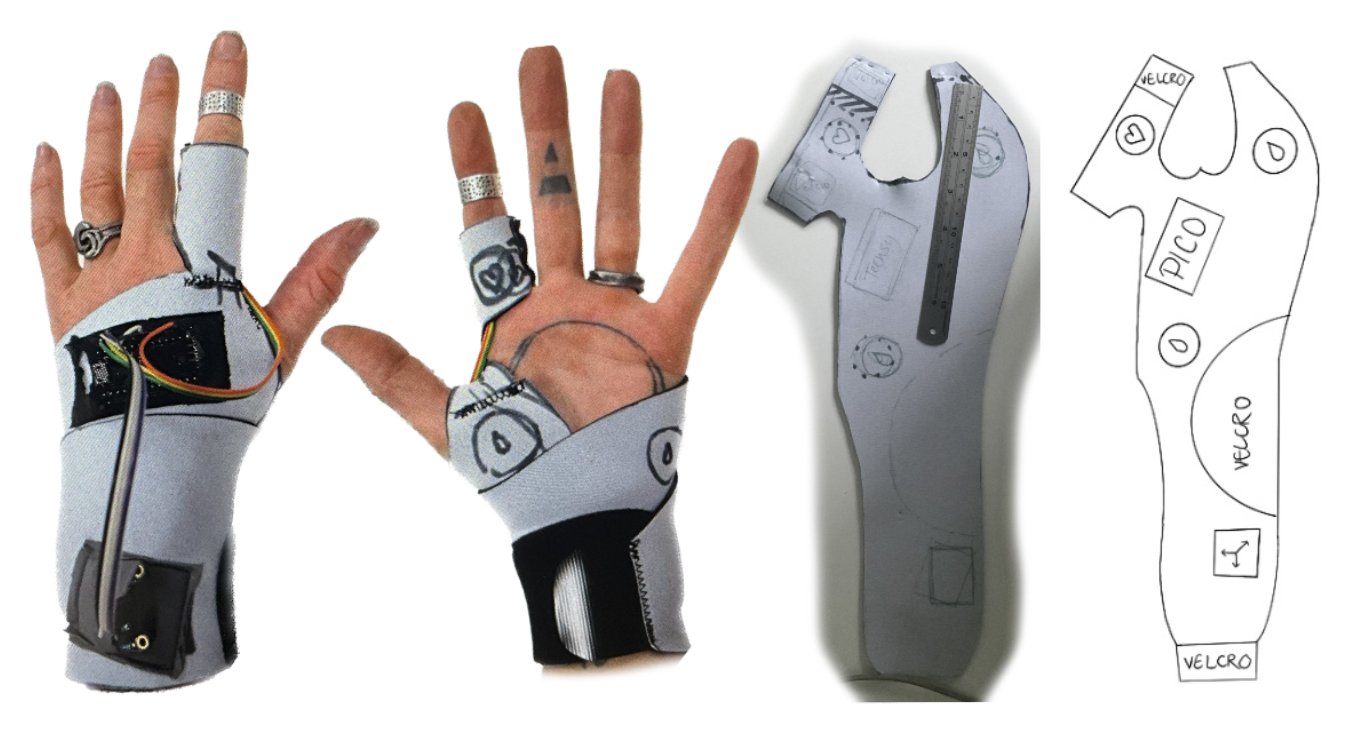IRL researcher collaborates with max planck institute for informatics
above: design ideas for a wrap-style cuff to securely hold various sensors including heart rate and GSR (galvanic skin response)
During July and August of 2023, researcher Rachel Freire was invited to the Max Planck Institute for Informatics (MPII) in Saarbrucken, Germany to collaborate with the Sensorimotor Interaction Group.
The IRL currently utilises open-source gloves designed by Rachel as a more tactile way to interact in VR. As the IRL itself does not facilitate hardware design or specifically do research in the field of HCI, collaborations such as this are an important way to utilise cross-disciplinary research to drive forward development for the lab.
The gloves are used in both Nanover (formerly Narupa) molecular simulation applications and more artistic interpretations of the system, such as Isness.
Upcoming IRL research will expand interaction design investigations to include the incorporation of commercial biofeedback devices. The aim is to gather participant data from VR experiences such as Ripple and Isness to be able to quantitively compare these experiences to those of psychedelics. This would add empirical data to such qualitative studies as the MEQ30, to further substantiate similarities between potential therapeutic uses for VR, as an adjacent and complimentary research thread to the current psychedelics renaissance.
Rachel specialises in on-body design, and the tangible and tactile complexities of the tools and interfaces we design to interact with technology. Interaction devices can have a huge impact on our experience of technology, and therefore their influence and potential physical biases are an important consideration when defining a design brief and proposed outcome.
The collaboration laid the groundwork for how best to mount multiple sensors on the body in such a way that we can gather stable data and also to ensure the user experience is not overly influenced by the devices themselves.
The intention is to incorporate existing commercial sensors into more customised designs. These commercial sensors and their simplistic carriers are primarily tested and marketed for clinical studies in which the participants are not expected to move a lot. Rachel explored the form factors of gloves (see right) and the measurement of breathing, looking at which parts of the hands and torso are most suited to stable readings when a participant is moving.
A small side project collaboration with the Visual Computing/AI department produced a pair of shoe covers with etextile insole sensors for body tracking. These will be used in exploring the design and training datasets for sparse data collection. We look forward to seeing how these sensors and datasets can be used to improve realistic movement capabilities of full body tracking and avatars, which is an important research thread for the future development of VR.

